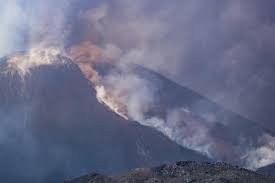The Ring of Fire: Significance and Risks

Introduction
The Ring of Fire is one of the most geologically active regions on Earth, encircling the Pacific Ocean. This area is characterized by numerous volcanoes and earthquakes, making it a topic of significant interest for scientists, environmentalists, and policymakers alike. Understanding the Ring of Fire is crucial because it not only informs disaster preparedness strategies but also plays a vital role in understanding global geology and climate conditions.
Geological Overview
The Ring of Fire is a horseshoe-shaped zone that stretches over 25,000 miles, encompassing the coasts of North and South America, Asia, and Oceania. Approximately 75% of the world’s active volcanoes and 90% of earthquakes occur within this area. The tectonic activity in the Ring of Fire is driven by the movement of several tectonic plates including the Pacific Plate, North American Plate, and the Philippine Sea Plate. This interaction leads to frequent volcanic eruptions and seismic events.
Recent Events
In recent months, the region has once again demonstrated its volatility. For instance, a 7.0 magnitude earthquake struck off the coast of Alaska in early October 2023, drawing attention to the seismic risks faced by coastal communities. Scientists noted that while this event was significant, it was not unexpected given the area’s geological characteristics. Meanwhile, volcanic eruptions in the Philippines also highlighted the ongoing activity within the Ring of Fire, leading to evacuations and safety alerts for local populations.
Implications for Communities
The presence of the Ring of Fire poses substantial risks, particularly for communities situated along the Pacific coastlines. Infrastructure, emergency services, and disaster response strategies must be constantly updated to prepare for potential earthquakes and eruptions. Governments in affected areas are increasingly focusing on strengthening buildings, updating evacuation plans, and educating the public on safety protocols.
Conclusion
The Ring of Fire remains a critical area for scientific study and public safety due to its geological significance and the potential risks it poses. As climate change impacts continue to evolve, understanding the interplay between geological events and environmental changes will be essential for better predicting and mitigating disasters. Continued research and investment in infrastructure will play a significant role in protecting communities at risk, ensuring that they are better equipped to handle the natural events associated with this dynamic region.





